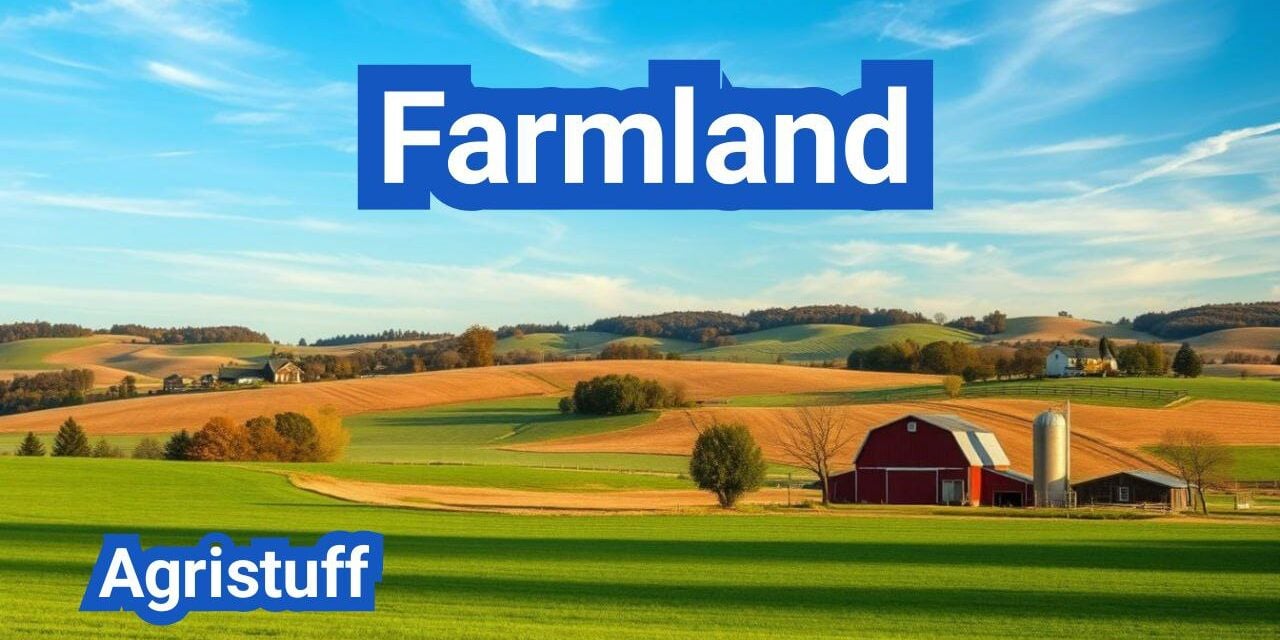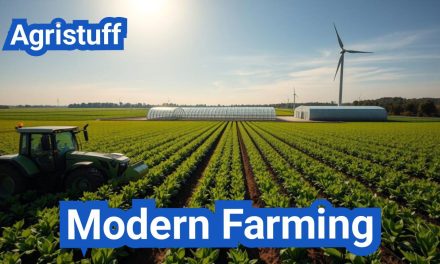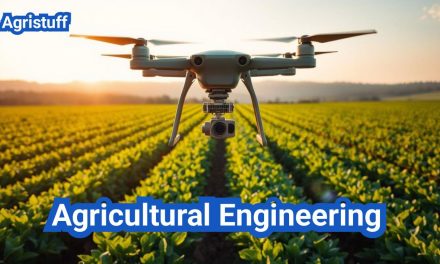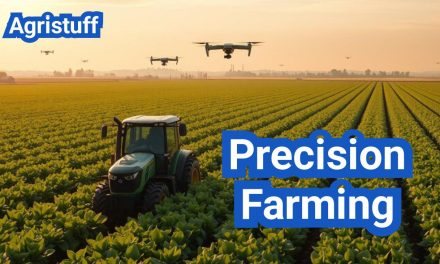Investing in farmland can be a lucrative venture, but it requires careful consideration of several factors, including soil quality and zoning regulations. With approximately 880 million acres of farmland in the United States, according to the U.S. Census of Agriculture, the opportunities are vast.
For beginners, navigating the complexities of buying farmland can be daunting. It’s essential to understand the importance of soil maps in determining land suitability and the impact of zoning laws on agricultural activities.
Additionally, understanding the costs associated with purchasing farmland is crucial for making an informed decision. This guide aims to provide a comprehensive overview of the key aspects to consider when buying farmland in the U.S.
Key Takeaways
- Understanding soil quality is crucial for determining the suitability of land for farming.
- Zoning laws and regulations can significantly impact agricultural activities.
- The cost of buying farmland varies widely depending on factors like location and soil quality.
- Soil maps are essential tools for assessing land suitability.
- Beginners should consider seeking professional advice when buying farmland.
Why Invest in U.S. Farmland: Benefits and Opportunities
U.S. farmland has emerged as an attractive investment option, offering a unique blend of income generation and long-term value appreciation. As investors increasingly look for alternatives to traditional assets, the agricultural sector presents a compelling opportunity.
Historically, farmland has demonstrated a low-volatility asset class, maintaining its value relatively well during economic downturns. This stability is a significant draw for investors seeking to diversify their portfolios.
Long-term Value of Agricultural Investments
Agricultural investments, particularly in farmland, have shown a consistent long-term appreciation in value. This is largely due to the increasing global demand for food production and the limited supply of arable land.
“The value of U.S. farmland has historically trended upward, driven by factors such as technological advancements in farming, increasing demand for agricultural products, and the finite nature of land resources.”
Source: National Agricultural Statistics Service
The long-term value of farmland is further enhanced by its potential for rental income through leasing to farmers or agricultural businesses.
Income Potential from Farming and Leasing
Farmland can generate income through direct farming operations or by leasing the land to other farmers. The income potential is influenced by factors such as crop prices, soil quality, and local market conditions.
| Region | Average Cash Rent per Acre | Potential Annual Income per 100 Acres |
|---|---|---|
| Corn Belt | $220 | $22,000 |
| Great Plains | $180 | $18,000 |
| Delta States | $200 | $20,000 |
Leasing farmland can provide a steady stream of income with relatively low management requirements compared to active farming operations.
Lifestyle Considerations for Beginning Farmers
For beginning farmers, investing in or leasing farmland can be a lifestyle choice as much as a financial investment. It offers the opportunity to work in a preferred environment and contribute to the agricultural community.
Beginning farmers should consider factors such as the location of the farmland, the quality of the soil, and access to necessary infrastructure and markets when making their investment decisions.
Types of Farmland: Understanding Your Options

Understanding the various types of farmland is crucial for making informed decisions when investing in agricultural land. The diverse categories of farmland cater to different agricultural needs and investment goals, making it essential to comprehend their characteristics and potential.
Cropland vs. Pasture Value Comparison
Cropland and pasture land are two primary categories of farmland, each with distinct values based on factors like soil quality, location, and market demand. Cropland, used for growing crops such as corn, soybeans, and wheat, tends to be more valuable in regions with fertile soil and adequate irrigation. In contrast, pasture land, used for grazing livestock, can be more valuable in areas with suitable terrain and climate for animal husbandry.
- Cropland value is often influenced by crop yield potential and market prices for the crops grown.
- Pasture land value is typically determined by its carrying capacity for livestock and the demand for grazing land.
Arable Agricultural Land Characteristics
Arable land, suitable for growing crops, is characterized by its fertility, drainage, and accessibility to irrigation. The quality of arable land is a critical factor in determining its value and potential for agricultural productivity. Key characteristics include:
- Soil quality: The nutrient content, pH level, and structure of the soil.
- Irrigation potential: Access to water resources for irrigation purposes.
- Topography: The land’s slope and elevation, affecting drainage and erosion risk.
Specialty Farmland Types and Their Uses
Specialty farmland encompasses unique agricultural operations such as orchards, vineyards, and nurseries. These types of farmland are often characterized by their specific crop or livestock focus and may require specialized infrastructure and management practices.
| Specialty Farmland Type | Primary Use | Key Characteristics |
|---|---|---|
| Orchard | Fruit production | Permanent tree crops, irrigation systems |
| Vineyard | Grape production for wine | Vine training systems, trellises, specific climate conditions |
| Nursery | Plant propagation | Greenhouses, irrigation systems, soil sterilization facilities |
Each type of specialty farmland presents unique opportunities and challenges, requiring a deep understanding of the specific agricultural practices and market conditions involved.
Navigating Farmland Listings and Sales Channels
To successfully purchase farmland, one must be adept at navigating the diverse sales channels available. The process involves exploring multiple listings and understanding the nuances of each sales channel.
Online Farmland Marketplaces
Online platforms have revolutionized the way farmland is bought and sold. Websites specializing in farmland listings provide a wide range of properties, detailed descriptions, and sometimes even virtual tours. Utilizing online marketplaces can significantly broaden a buyer’s search, allowing for comparisons across different regions and property types.
For instance, platforms like LandWatch and Farm.com offer extensive listings that cater to various needs, from small hobby farms to large commercial operations.
“The digital age has made it easier for buyers to find and evaluate farmland without the need for physical visits initially,”
Working with Farm Real Estate Specialists
While online marketplaces are a valuable resource, working with a farm real estate specialist can provide insights and access to off-market listings. These professionals have in-depth knowledge of local markets, including soil quality, water rights, and zoning regulations.
A specialist can guide buyers through the complexities of farmland transactions, ensuring that all factors are considered. They often have a network of contacts, including agricultural experts, attorneys, and lenders, which can be invaluable during the purchasing process.
Auction Methods for Farmland Purchases
Auctions represent another viable channel for purchasing farmland. Auctions can be particularly appealing for motivated buyers looking to acquire property quickly. However, it’s crucial to approach auctions with a clear understanding of the property’s value and the auction process.
- Research the property thoroughly before the auction.
- Understand the terms and conditions of the sale.
- Set a maximum bid based on your budget and stick to it.
By combining online research, professional guidance, and a strategic approach to auctions, buyers can navigate the farmland market effectively.
Farmland Prices by State: Regional Market Analysis

Understanding the regional dynamics of farmland prices is crucial for potential buyers and investors. The cost of farmland can vary significantly across different states and regions, influenced by factors such as soil quality, water availability, and local agricultural trends.
Highest and Lowest-Priced Farming Regions
The United States has diverse farming regions, each with its unique characteristics and price points. For instance, farmland in the Corn Belt, known for its fertile soils, tends to be more expensive than in other regions. In contrast, areas with less productive soil or those farther from major markets may offer more affordable options.
- The top five states with the highest farmland prices are typically found in the Northeast and California.
- States in the Midwest, such as Iowa and Illinois, also have high farmland prices due to their productive agricultural land.
- Regions with lower farmland prices include parts of the Great Plains and the Southeast.
Price Trends and Market Forecasts
Analyzing price trends is essential for understanding the future direction of farmland prices. Factors influencing these trends include commodity prices, government policies, and technological advancements in agriculture.
- Recent years have seen an increase in farmland prices in many regions, driven by strong commodity prices and low interest rates.
- Forecasts suggest that farmland prices will continue to rise, albeit at a slower pace, as the agricultural sector adapts to changing market conditions.
- Regional variations in price trends are expected, with some areas experiencing more significant growth than others.
Finding Value: Affordable Farming Opportunities
For those looking to invest in farmland, identifying affordable opportunities is key. This involves looking beyond the most expensive regions and considering factors such as land quality, zoning regulations, and potential for improvement.
Key considerations for affordable farming opportunities include:
- Soil quality and potential for irrigation.
- Local zoning laws and land-use regulations.
- Access to markets and infrastructure.
By carefully evaluating these factors, investors can find valuable farmland at prices that offer a good return on investment.
Evaluating Soil Quality: Maps and Classification Systems
When evaluating farmland, understanding soil quality is paramount for making informed decisions. Soil quality significantly influences the land’s productivity, sustainability, and overall value. The United States Department of Agriculture (USDA) provides valuable resources for assessing soil quality through its soil surveys and classification systems.
Accessing and Reading USDA Soil Surveys
The USDA’s Natural Resources Conservation Service (NRCS) offers detailed soil surveys that cover most areas of the United States. These surveys are available online and can be accessed through the NRCS website. Soil surveys provide comprehensive information about the soil types within a given area, including their characteristics, limitations, and potential uses.
To effectively use these surveys, it’s essential to understand how to read the data provided. Soil surveys typically include maps, descriptive information about soil types, and interpretations for various land uses. For instance, the surveys might detail the soil’s texture, structure, and drainage characteristics, all of which are crucial for determining its suitability for different crops or agricultural practices.
“Soil surveys are a critical tool for farmers, landowners, and agricultural professionals. They provide the data needed to make informed decisions about land management and conservation practices.” – USDA NRCS
Understanding Soil Capability Classes
The USDA has developed a soil capability classification system that categorizes soils based on their suitability for agricultural use. This system ranges from Class I soils, which are considered prime farmland with few limitations, to Class VIII soils, which are not suitable for agricultural production due to severe limitations.
Understanding these capability classes is vital for evaluating farmland. For example, Class I soils are highly versatile and can support a wide range of crops with minimal risk of degradation. In contrast, soils in the higher classes may require more intensive management practices or conservation measures to be used sustainably.
- Class I: Soils with few limitations for cultivation
- Class II-III: Soils with moderate limitations that require careful management
- Class IV-VIII: Soils with severe limitations or not suitable for cultivation
Identifying Prime Farmland Soils
Prime farmland soils are those that have the best combination of physical and chemical characteristics for producing crops. These soils are highly productive, with minimal limitations for agricultural use. Identifying prime farmland is crucial for farmers and investors looking to maximize their returns on agricultural land.
The USDA defines prime farmland based on specific criteria, including soil temperature, moisture supply, and the absence of significant limitations such as flooding or erosion hazards. Land that meets these criteria is considered prime for the production of a variety of crops, including corn, soybeans, and other major agricultural commodities.
Key characteristics of prime farmland soils include:
- Adequate moisture supply
- Favorable soil temperature regime
- Good drainage and aeration
- Minimal risk of erosion or other hazards
By understanding and utilizing the resources provided by the USDA, such as soil surveys and capability classes, individuals can effectively evaluate soil quality and identify prime farmland. This knowledge is essential for making informed decisions in agricultural land management and investment.
Water Rights and Resources for Farmland
Water rights can significantly impact the value and productivity of farmland across different regions. For farmers and investors, understanding these rights is crucial for making informed decisions about agricultural land purchases.
Understanding Water Rights by Region
Water rights vary significantly across the United States, influenced by state laws, regional water availability, and historical water use practices. In some areas, water rights are tied to the land itself, while in others, they are separate and can be bought, sold, or leased independently.
Regional Variations: In the western United States, water rights are often governed by the doctrine of prior appropriation, which means that the first user of water has senior rights. In contrast, eastern states typically follow riparian law, where landowners adjacent to a water source have rights to use it.
Irrigation Infrastructure Assessment
The availability and condition of irrigation infrastructure are critical factors in assessing farmland viability. This includes evaluating the presence, age, and condition of irrigation systems, wells, and other water delivery mechanisms.
- Assess the type and condition of irrigation systems.
- Evaluate the availability of water sources for irrigation.
- Consider the energy costs associated with operating irrigation systems.
Floodplain Mapping and Flood Risk Evaluation
Floodplain mapping is essential for understanding the risk of flooding to farmland. This involves reviewing flood hazard maps provided by the Federal Emergency Management Agency (FEMA) and other sources to determine if the land is located within a flood-prone area.
Flood Risk Considerations: Farmers should consider the potential for crop loss, soil erosion, and infrastructure damage due to flooding. Understanding flood risk can help in planning mitigation measures and selecting appropriate crop insurance coverage.
Agricultural Zoning Rules and Land Use Restrictions

Zoning laws significantly impact the potential uses and value of agricultural land. As such, understanding these regulations is crucial for anyone looking to invest in farmland in the United States. Agricultural zoning rules are designed to preserve agricultural land, regulate land use, and balance the needs of farming communities with those of neighboring landowners.
Common Zoning Classifications for Farmland
Agricultural zoning classifications vary by jurisdiction but generally categorize land based on its agricultural use. Common classifications include:
- Agricultural districts, which are designated for farming and related activities.
- Exclusive agricultural zones, which restrict non-agricultural development.
- Agricultural overlay zones, which provide additional protections or incentives for farming.
Understanding these classifications is essential for determining what activities are allowed on a particular piece of farmland.
Building and Development Restrictions
Zoning regulations often impose restrictions on building and development on farmland. These can include:
- Limitations on the size and type of structures that can be built.
- Requirements for setbacks from roads and neighboring properties.
- Restrictions on the use of certain areas, such as wetlands or floodplains.
These restrictions are designed to minimize the impact of development on agricultural productivity and environmental quality.
Navigating Zoning Changes and Variances
For landowners or prospective buyers, navigating zoning changes or obtaining variances can be a complex process. This may involve:
- Submitting applications for zoning changes or variances.
- Participating in public hearings.
- Negotiating with local authorities or neighboring landowners.
Understanding the process and requirements for zoning changes and variances is crucial for achieving the desired land use.
Farmland Appraisal Methods: Determining Fair Value

Determining the fair value of farmland is crucial for both buyers and sellers in the agricultural real estate market. Farmland appraisal involves evaluating various factors to ascertain the land’s value, which can be done using several methods.
Income Approach to Valuation
The income approach is a widely used method for appraising farmland. It involves calculating the present value of the future income the land is expected to generate. This method is particularly useful for farmland that is currently in production or has the potential for agricultural use.
Key steps in the income approach include:
- Estimating the potential gross income from the land
- Deducting operating expenses to determine net income
- Applying a capitalization rate to the net income to arrive at the land’s value
Comparable Sales Method
The comparable sales method involves analyzing recent sales of similar farmland in the same or nearby areas to determine the value of the subject property. This method relies on the principle that the value of a property can be inferred from the sales prices of comparable properties.
Factors considered in the comparable sales method include:
- Location and accessibility of the land
- Soil quality and productivity
- Size and configuration of the parcel
- Presence of improvements such as irrigation systems
Cost Approach for Improved Farmland
The cost approach is used for farmland that has significant improvements, such as buildings, irrigation systems, or other infrastructure. This method estimates the value of the land by calculating the cost to replace or reproduce the improvements, minus depreciation, and adding the value of the land as if it were vacant.
Key considerations in the cost approach include:
- Estimating the cost of land preparation and improvements
- Accounting for depreciation of improvements over time
- Valuing the land separately from its improvements
Legal Protections and Considerations for Farm Buyers

When purchasing farmland in the U.S., understanding the legal landscape is crucial for making informed decisions. Farm buyers must be aware of the various legal protections and considerations that can impact their investment.
Right-to-Farm Laws and Their Benefits
Right-to-farm laws are designed to protect farmers from nuisance lawsuits that could arise from normal farming practices. These laws vary by state but generally provide a level of protection against complaints from neighboring landowners. For farm buyers, understanding the right-to-farm laws in their state can be a significant factor in choosing where to purchase land.
Key benefits of right-to-farm laws include:
- Protection against nuisance lawsuits
- Support for agricultural practices
- Enhanced security for farm investments
Easements and Access Rights
Easements and access rights are critical legal considerations for farm buyers. An easement grants someone the right to use a portion of land for a specific purpose, which could impact how the land is used. Understanding existing easements on a property is vital to avoid future disputes.
Types of easements include:
- Utility easements for access to services like electricity or water
- Conservation easements to protect natural resources
- Access easements for ingress and egress
Farm Title Insurance Essentials
Farm title insurance is another crucial aspect for farm buyers to consider. It protects against financial loss due to defects in the title, such as unforeseen liens or ownership disputes. Ensuring clear title to the land is essential for securing financing and avoiding legal issues down the line.
The importance of farm title insurance includes:
- Protection against title defects
- Financial security for the investment
- Peace of mind for farm buyers
By understanding and addressing these legal protections and considerations, farm buyers can better navigate the complex process of purchasing farmland, ensuring a more secure and successful investment.
Financing Your Farmland Purchase

Understanding the various financing options available is crucial for those looking to purchase farmland. The process of securing funds for agricultural land can be complex, involving various financial instruments and government programs designed to support farmers.
Traditional Agricultural Loans
Traditional agricultural loans are offered by banks and financial institutions specializing in farm financing. These loans are typically secured by the farmland itself and offer competitive interest rates. Key considerations include the loan-to-value ratio, repayment terms, and any associated fees.
For instance, a farmer might secure a loan with a 5% interest rate over 20 years, with a loan-to-value ratio of 70%. This means the farmer would need to provide a significant down payment.
Beginning Farmer Loan Programs
Beginning farmer loan programs are designed to support new entrants into the agricultural sector. These programs often offer more favorable terms, such as lower interest rates or reduced down payment requirements. They are crucial for young or novice farmers looking to establish themselves.
For example, some programs offer loan guarantees to lenders, reducing the risk and making it easier for beginning farmers to secure financing.
USDA Farm Service Agency Financing Options
The USDA Farm Service Agency (FSA) provides financing options for farmers, including direct loans and loan guarantees. These programs are designed to support farmers who may not have access to traditional credit channels. The FSA also offers specialized programs for beginning farmers and those affected by disasters.
| Financing Option | Description | Key Benefits |
|---|---|---|
| Traditional Agricultural Loans | Loans from banks and financial institutions | Competitive interest rates, flexible repayment terms |
| Beginning Farmer Loan Programs | Programs for new farmers with favorable terms | Lower interest rates, reduced down payments |
| USDA FSA Financing | Direct loans and loan guarantees from the USDA | Support for farmers without traditional credit access |
Financing farmland is a significant step towards agricultural investment. By understanding the available options, prospective farmers can make informed decisions that align with their financial situation and farming goals.
Farmland Cash Rent and Leasing Strategies

Understanding farmland cash rent and leasing strategies is crucial for both landowners and tenants looking to maximize their returns. The agricultural landscape is diverse, with varying cash rent rates across different regions, making it essential for stakeholders to stay informed.
Current Cash Rent Rates by Region
Cash rent rates for farmland can significantly vary depending on the region, soil quality, and local market conditions. For instance, the Corn Belt region tends to have higher cash rent rates due to its fertile soil and high crop yields. In contrast, regions with less productive land may have lower cash rent rates.
According to recent data, the average cash rent per acre for cropland in the United States is around $140. However, this figure can range from as low as $50 per acre in some areas to over $300 per acre in more productive regions.
Lease Structure Options for Landowners
Landowners have several lease structure options to consider when renting out their farmland. The most common types include:
- Cash Lease: A fixed rent per acre, providing a stable income stream.
- Crop Share Lease: Landowners receive a percentage of the crop yield, sharing the risk with the tenant.
- Flexible Cash Lease: Rent is adjusted based on crop yields or prices, offering a balance between stability and potential for higher returns.
Each lease structure has its advantages and disadvantages, and the choice depends on the landowner’s risk tolerance and financial goals.
Calculating Return on Investment for Leased Land
Calculating the return on investment (ROI) for leased farmland involves considering several factors, including the cash rent received, property taxes, insurance, and maintenance costs. The formula for ROI is:
ROI = (Annual Cash Rent – Expenses) / Total Investment
For example, if a landowner receives $200 per acre in cash rent and has expenses of $50 per acre, with a total investment of $2,000 per acre, the ROI would be calculated as follows: ROI = ($200 – $50) / $2,000 = 7.5%.
Understanding the ROI helps landowners evaluate the profitability of their farmland investment and make informed decisions about future leasing arrangements.
Farm Conservation Easements and Programs

Farm conservation easements have become a vital tool for landowners looking to preserve their agricultural heritage while benefiting from tax advantages. These easements are part of broader conservation programs designed to protect farmland from development and promote sustainable agricultural practices.
Tax Advantages of Conservation Participation
One of the significant benefits of participating in farm conservation easements is the potential for tax advantages. Landowners who place their property under a conservation easement may be eligible for federal income tax deductions, as well as reductions in estate and property taxes. The value of the easement can be deducted from the landowner’s taxable income, providing substantial savings.
For instance, the Internal Revenue Code Section 170(h) allows for the deduction of the fair market value of a qualified conservation easement. To qualify, the easement must be donated to a qualified organization, such as a land trust, and must meet specific conservation purposes.
Restrictions on Land Use with Easements
While conservation easements offer numerous benefits, they also come with certain restrictions on land use. These restrictions are designed to ensure that the conservation purposes of the easement are met and maintained over time. Common restrictions include limitations on development, requirements for sustainable farming practices, and protections for wildlife habitats.
- Limitations on subdivision and development
- Requirements for maintaining soil health and preventing erosion
- Protections for water quality and aquatic habitats
- Conservation of wildlife habitats and biodiversity
Working with Land Trusts and Conservation Organizations
Landowners interested in establishing a conservation easement typically work with land trusts or other conservation organizations. These entities hold the easement and are responsible for ensuring that its terms are enforced. When selecting a land trust, it’s essential to choose an organization that is experienced and reputable.
Land trusts can provide valuable guidance on the easement process, including appraisal, negotiation, and compliance. They can also offer insights into the potential tax benefits and help landowners navigate the complexities of conservation easement law.
Creating a Successful Farm Business Plan

A well-structured agricultural business plan serves as a roadmap for farmers to achieve their goals. It outlines the farm’s mission, production strategies, marketing plans, and financial projections, providing a comprehensive framework for decision-making.
Essential Components of an Agricultural Business Plan
An effective farm business plan should include several key elements. Executive summary, market analysis, and production plans are crucial for outlining the farm’s overall strategy. Additionally, financial projections, including income statements, balance sheets, and cash flow statements, are vital for securing funding and managing farm operations.
The market analysis should assess demand for the farm’s products, identify target markets, and analyze competitors. This information helps farmers make informed decisions about production and marketing strategies.
Financial Projections for New Farm Operations
Financial projections are a critical component of the farm business plan, as they provide a forecast of the farm’s financial performance. These projections should include:
- Revenue projections based on expected crop yields and market prices
- Expense estimates, including production costs, labor, and equipment expenses
- Cash flow projections to ensure the farm’s liquidity
- Break-even analysis to determine when the farm will become profitable
Accurate financial projections enable farmers to make informed decisions about investments, funding requirements, and operational adjustments.
| Financial Metric | Year 1 | Year 2 | Year 3 |
|---|---|---|---|
| Revenue | $100,000 | $120,000 | $150,000 |
| Expenses | $80,000 | $90,000 | $100,000 |
| Net Income | $20,000 | $30,000 | $50,000 |
Resources for Business Planning Assistance
Several resources are available to assist farmers in developing their business plans. The USDA’s Natural Resources Conservation Service (NRCS) and Farm Service Agency (FSA) offer guidance on business planning, conservation practices, and financial assistance programs.
Additionally, land-grant universities and cooperative extension services provide workshops, online resources, and one-on-one consultations to help farmers develop effective business plans.
By leveraging these resources and creating a comprehensive business plan, farmers can increase their chances of success and build a sustainable agricultural business.
Due Diligence Checklist for Farmland Purchases
When purchasing farmland, it’s crucial to conduct thorough due diligence to ensure a successful investment. This process involves evaluating various aspects of the property to determine its value, potential risks, and opportunities for improvement.
Environmental Assessments and Considerations
Environmental assessments are a critical component of due diligence for farmland purchases. These assessments help identify potential environmental hazards, such as soil contamination, water pollution, or endangered species habitats. Buyers should review existing environmental reports and conduct site visits to assess the property’s condition.
Key environmental factors to consider:
- Soil quality and potential contaminants
- Water sources and quality
- Presence of endangered species or habitats
- Existing environmental permits and compliance issues
Infrastructure and Improvement Evaluation
Evaluating the infrastructure and improvements on the farmland is essential to determine its value and potential for productivity. This includes assessing the condition of:
- Irrigation systems and water management infrastructure
- Fencing and boundary markers
- Farm buildings and storage facilities
- Access roads and internal pathways
Legal and Title Verification Processes
Legal and title verification are critical steps in the due diligence process. Buyers should:
- Verify the seller’s ownership and title to the property
- Review existing leases, easements, and other encumbrances
- Check for any outstanding liens or judgments against the property
- Ensure compliance with local zoning and land-use regulations
Soil and Water Testing Requirements
Soil and water testing are essential components of due diligence for farmland purchases. Buyers should conduct or review existing tests to determine:
- Soil nutrient levels and pH
- Soil contamination or toxicity
- Water quality and potential sources of contamination
By following this due diligence checklist, farmland buyers can make informed decisions and avoid potential pitfalls in their investment.
Taking the First Steps Toward Farmland Ownership
Purchasing farmland can be a complex process, but with the right guidance, buyers can navigate the process successfully. As discussed in this guide, careful consideration of factors such as soil quality, zoning regulations, and financing options is crucial for making an informed decision.
By understanding the different types of farmland, evaluating soil maps, and assessing water rights, prospective buyers can identify the ideal property for their needs. Additionally, navigating farmland listings, working with real estate specialists, and exploring financing options can streamline the purchasing process.
As you take the first steps toward farmland ownership, it is essential to prioritize due diligence and careful planning. By doing so, you can ensure a successful transaction and set yourself up for long-term success in your agricultural endeavors. With the knowledge and insights gained from this guide, you are now better equipped to embark on your farmland ownership journey.
FAQ
What are the key factors to consider when buying farmland in the U.S.?
When buying farmland, it’s essential to consider factors such as soil quality, zoning regulations, water rights, and costs associated with purchasing and maintaining the land.
How do I determine the value of different types of farmland?
The value of farmland depends on its type, location, and use. Cropland, pasture land, and specialty farmland have different values and characteristics. You can determine the value by using farmland appraisal methods such as the income approach, comparable sales method, and cost approach.
What are the benefits of investing in U.S. farmland?
Investing in U.S. farmland can provide long-term value, income generation through farming and leasing, and lifestyle considerations for beginning farmers. Farmland can also provide a stable source of returns.
How do I navigate farmland listings and sales channels?
You can navigate farmland listings and sales channels by using online marketplaces, working with farm real estate specialists, and auction methods. It’s essential to research and understand the different sales channels to find the best option for your needs.
What are the different financing options available for farmland purchases?
There are various financing options available for farmland purchases, including traditional agricultural loans, beginning farmer loan programs, and USDA financing options. You can explore these options to find the best fit for your situation.
How do I evaluate soil quality when purchasing farmland?
You can evaluate soil quality by accessing and reading USDA soil surveys, understanding soil capability classes, and identifying prime farmland soils. This information will help you determine the land’s potential for farming and its value.
What are the implications of agricultural zoning rules and land use restrictions?
Agricultural zoning rules and land use restrictions can impact your ability to use the land for farming or other purposes. It’s essential to understand the zoning classifications, building and development restrictions, and navigate zoning changes and variances.
How do I calculate the return on investment for leased land?
To calculate the return on investment for leased land, you need to consider factors such as cash rent rates, lease structure options, and the land’s productivity. You can use this information to determine the potential income and returns on your investment.
What are the benefits and restrictions of farm conservation easements?
Farm conservation easements can provide tax advantages and help preserve the land for agricultural use. However, they can also restrict land use and development. It’s essential to understand the implications of conservation easements before making a decision.
What are the essential components of an agricultural business plan?
An agricultural business plan should include financial projections, market analysis, and production plans. You can also seek resources for business planning assistance to help you create a comprehensive plan.
What is the due diligence process for farmland purchases?
The due diligence process for farmland purchases involves environmental assessments, infrastructure and improvement evaluation, legal and title verification processes, and soil and water testing requirements. This process helps you identify potential risks and opportunities associated with the land.
Conclusion of: Buying Farmland in the U.S.
Why buying farmland now requires a smarter playbook
If you’re thinking about buying farmland in the U.S., you’re joining producers, investors, and homesteaders who see land as both an operating base and a resilient asset. The smartest buyers treat a farmland purchase like a business acquisition: they gather soil data, verify water and zoning, model cash flows, and build contingencies into offers. In this guide, you’ll learn how to screen farmland with NRCS soil maps, benchmark prices and cash rents with USDA data, check floodplains and wetlands, and navigate financing, title, and tax questions—so you can move quickly without skipping critical due diligence on the farmland you want. Find Farmland – Farmland Information Center
Clarify your goals to narrow the right farmland
Start by defining what farmland success looks like for you: annual row crops, specialty horticulture, grazing and hay, mixed enterprises, or income-focused ownership with a leaseback. Your goals determine acreage, soils, water, infrastructure, and proximity to markets—and they shape how you value improvements on farmland such as tile drainage, irrigation, or barns. Write a one-page brief that lists your target counties, soil capability classes, water expectations, and budget; you’ll use it to filter listings and keep negotiations disciplined for any farmland you evaluate. Farms for a New Generation – American Farmland Trust
Know the going rate: farmland values and cash rents
To sanity-check asking prices for farmland, benchmark against USDA state and regional reports that track farm real estate, cropland, and pasture values plus cash rents. Expect wide variation by state and within counties depending on soil productivity, irrigation, and competitive bidding. Pair the federal snapshots with local broker comps and auction results to estimate cap rates and payback periods for income-producing farmland. These benchmarks help you avoid overpaying and support your lender appraisal. USDA NASS Land Values & Cash Rents (PDF)
Budget beyond the sticker price of farmland
When you pencil an offer on farmland, include closing costs (title, survey, attorney), environmental checks, needed improvements (fencing, drainage, wells), and the first year’s operating and reserve capital. If irrigation or grain handling is required, price three-phase power and pads. Use regional farmland value and rent data to pressure-test cash flow and ensure debt service coverage even at average yields and conservative prices. USDA Agricultural Land Values – Ag Library
Read the dirt: use NRCS Web Soil Survey first
Soils define the ceiling for your farmland productivity. The NRCS Web Soil Survey (WSS) shows soil types, capability classes, drainage, depth, slope, and limitations. Before touring, map the parcel so you know whether the farmland has prime soils, areas prone to ponding, or erosion risks. Export the PDF for your deal folder and share with lenders or partners as part of your technical package on the farmland. NRCS Web Soil Survey
How to pull a quick soil map for farmland
On WSS, draw an Area of Interest around the farmland, then generate the Soil Map and key reports: capability class (I–VIII), hydrologic soil group (drainage), depth to restrictive features, and available water capacity. Check pH and salinity data for specialty crops. This prework helps you price the farmland accurately and anticipate input needs like lime or tile. WSS Help Guide
Soil health, drainage, and on-farm testing still matter
WSS is a starting point, not a lab test. Walk the farmland after rain to see infiltration and ponding; probe for compaction; and pull soil samples to verify organic matter, nutrient status, and salinity. Ask for tile maps and maintenance history if the farmland is pattern-tiled. Good soils with poor drainage can underperform—factor remediation into your offer and timeline. NRCS Soil Science – Basics
Secure water: wells, rights, and irrigation on farmland
In many states, water law dictates what your farmland can produce. Confirm the source (well, surface delivery, adjudicated right), priority dates, permits, and infrastructure before closing. In prior-appropriation states, rights are “use it or lose it”; in riparian states, access is tied to land ownership. A water-law attorney can validate that your farmland has legal, reliable supply. National Ag Law Center – Water Law Overview
Check floodplains and insurance implications
Flood risk changes planting windows, infrastructure siting, and insurance costs for farmland. Always pull FEMA flood maps for each parcel; if fields sit in Special Flood Hazard Areas, your lender may require flood insurance and you should plan buildings and access accordingly. Weigh the premium against the productivity of the farmland zones at risk. FEMA Flood Map Service Center
Wetlands, HEL compliance, and cost-share opportunities
USDA program participation requires compliance on Highly Erodible Land (HEL) and Wetland Conservation. Before altering drainage on farmland, consult NRCS to avoid violations and to explore cost-share for conservation practices. Compliance protects your eligibility for federal benefits and reduces long-term erosion risk on the farmland. USDA FSA – Conservation Compliance
Zoning, permitted uses, and Right-to-Farm protections
Even rural counties regulate use intensity, livestock numbers, on-farm retail, worker housing, and agritourism on farmland. Verify the zoning district and any overlays, then read your state’s Right-to-Farm statute, which can protect normal operations from nuisance suits when the farmland is managed properly. Local planners can flag setbacks or permits needed for barns or processing. Right-to-Farm Overview – NALC
Planning tools that protect working lands
Some communities use agricultural zoning, cluster development, and purchase of development rights to keep farmland viable. These tools stabilize the operating environment, reduce conflicts at the urban edge, and protect prime soils near your farmland. Ask planning staff how these policies affect expansion, housing for workers, or on-farm processing. Planning for Agriculture – FIC
Conservation easements: preserving value and access
Agricultural conservation easements can lower acquisition cost and permanently protect farmland from non-farm development while allowing productive use. If an easement exists or is planned, examine deed terms, building envelopes, and resale rules so you understand the operating flexibility of the farmland. For new easements, talk to land trusts and NRCS about ACEP-ALE. ACEP-ALE Toolkit – FIC
Access, utilities, and infrastructure checklist
Great soils won’t save landlocked farmland. Confirm legal access (recorded easements), all-weather roads, and utility capacity. If you need irrigation pumps or grain handling, check for three-phase power; price fencing, frost-free hydrants, and equipment pads. Verify well and septic siting before you build on the farmland. MSU Extension – So You Want to Buy a Farm
Title work, surveys, and closing items
Order a boundary survey and have counsel review the legal description, access rights, easements, leases, and mineral reservations for the farmland. Owner’s title insurance doesn’t replace due diligence, but it protects equity against undisclosed claims. Align your purchase agreement timelines with survey and title commitments so the farmland can close cleanly. CFPB – Owner’s Title Insurance
Understand taxes for farmland owners
Owning income-producing farmland typically means Schedule F reporting, potential depreciation on eligible assets, and careful records for inputs and improvements. Many states offer agricultural use valuation that can reduce property taxes when land remains working farmland. Work with a farm-savvy CPA before your first season to structure entities and accounting. IRS Publication 225 – Farmer’s Tax Guide
Foreign ownership, corporate restrictions, and disclosures
Ownership rules for farmland vary by state; several restrict certain foreign or corporate purchases. Federally, the Agricultural Foreign Investment Disclosure Act (AFIDA) requires reporting of foreign interests in U.S. agricultural land. If entities or cross-border partners are involved, confirm state restrictions and federal filings early in the transaction for the farmland. Foreign Ownership of Ag Land – NALC
Financing paths: FSA and conventional options
For many first-time buyers, USDA’s Farm Service Agency bridges the gap to buy farmland via Direct Farm Ownership loans and the Beginning Farmer Down Payment option. You can blend FSA with conventional loans or Farm Credit to reach competitive terms. Strong soil maps, water documentation, and a cash-flow plan make your farmland package lender-ready. USDA FSA – Farm Ownership Loans
How much can you borrow for farmland?
Loan limits, rates, and eligibility for farmland purchases change over time. Review current programs on Farmers.gov and talk to multiple lenders about appraisal standards and timelines. Build appraisal and financing contingencies into your offer so you can adjust or exit if the farmland doesn’t underwrite. USDA Farmers.gov – Loans Overview
Lease-first strategies to de-risk a purchase
If you’re new to a region or crop, leasing farmland for a season can reveal drainage issues, weed pressure, wildlife damage, and water-delivery reliability before you commit to a purchase. Consider a lease-option or right-of-first-refusal to secure the opportunity while you build operating history on the farmland. Find Farmland – Listings & Land Links
Crop insurance and risk management
Before bidding on farmland, evaluate crop insurance availability, unit structures, and premiums for your target crops and county. Lenders often prefer buyers who model yield and price risk with realistic coverage levels tied to the soils and weather of the farmland. An experienced agent can run scenarios that align with your cash-flow plan. USDA Risk Management Agency
Finding properties and building your team
Combine local brokers, auctioneers, Extension, and land-link programs to surface listed and off-market farmland. Line up your team early—lender, attorney, surveyor, and NRCS conservationist—so you can move fast on quality farmland without skipping diligence. A prepared buyer with clean contingencies often wins competitive situations. Farm-Link Programs by State – FIC
Make offers with contingencies that protect you
In hot markets, you may need speed, but never at the expense of critical protections for farmland deals. Include financing, appraisal, clear title, zoning verifications, water/well tests, and a review period for soils, flood maps, and wetlands. Attach your WSS soil map and FEMA panel to demonstrate how you priced the farmland value. CFPB – Closing Services & Title
Use public data to benchmark your farm business plan
Lenders expect federal data in your memo: land values, cash rents, yields, and release calendars for updates that could affect the value of farmland. Tie your revenue assumptions to realistic yields for the soil capability classes on the farmland, and your cost assumptions to irrigation, drainage, and logistics. Conservative plans earn trust. USDA NASS – Highlights & Releases
Where to get help after you close
Once the farmland is yours, partner with NRCS, Extension, and your state Department of Agriculture for conservation planning, practice design, and cost-share funding. These services help you stretch improvement dollars across the farmland and maintain productivity while protecting soil and water. Keep your WSS maps and conservation plan updated as you make changes on the farmland. NRCS – Web Soil Survey Resources
Final thought
Buying farmland is more than a real-estate deal; it’s a long-term operating commitment shaped by soils, water rights, legal frameworks, and markets. If you lead with soil maps, verify water and zoning early, price flood and compliance risks, and model cash flows with USDA benchmarks, you’ll give yourself room to thrive on the farmland you choose. USDA – Beginning Farmers
Sources & References
USDA NASS – Land Values & Cash Rents (2024)
NRCS Web Soil Survey
Web Soil Survey – Help Guide
NRCS – Soil Science
National Agricultural Law Center – Water Law
Right-to-Farm Overview – NALC
Planning for Agriculture – FIC
ACEP-ALE Toolkit – FIC
CFPB – Owner’s Title Insurance
IRS Publication 225 – Farmer’s Tax Guide
Foreign Ownership of Ag Land – NALC
USDA FSA – Farm Ownership Loans
USDA Farmers.gov – Loans Overview
USDA Risk Management Agency
Find Farmland – FIC
Farm-Link Programs by State – FIC
CFPB – Closing Services & Title
USDA NASS – Highlights & Releases
NRCS – WSS Resources










